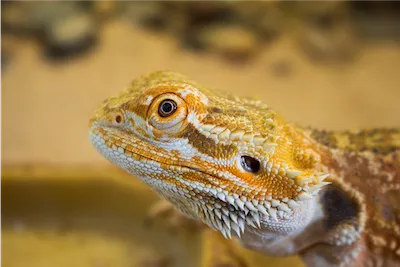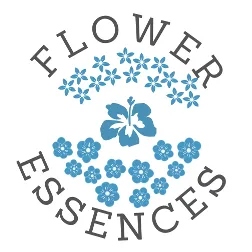Cats, Dogs, Horses, Small Pets, Birds, Poultry & Reptile
(How to Use with Fish is below)
our testimonials & articles about
Cold-Blooded Calmness and Well-being

Understanding Stress-induced Brumation in Pet Reptile-A Basic Guide
Stress-induced Brumation in Pet Reptiles
Introduction:
In the intricate world of reptile care, understanding the impact of stress on certain species, particularly in the context of burmation, is crucial for ensuring their well-being. Brurmation, a reptilian phenomenon akin to hibernation, is not only influenced by seasonal changes but can also be triggered by stressors within captivity. This comprehensive guide delves into the intricate relationship between stress and brumation, shedding light on the signs, causes, and mitigation strategies to provide reptile enthusiasts with the knowledge needed to create optimal environments for their scaly companions.
Understanding Brumation: An Overview
Brumation, a phenomenon closely akin to hibernation, stands as a fascinating aspect of reptilian behavior, particularly in the context of captive environments. This comprehensive overview delves into the multifaceted landscape of brumation, offering a nuanced exploration of its definition, biological underpinnings, and the intricate ways it manifests in various reptile species.
Defining Brumation:
Brumation refers to a state of slowed metabolic activity and reduced physiological functions observed in cold-blooded reptiles, akin to hibernation in warm-blooded animals. While it occurs naturally in response to seasonal changes in the wild, captive reptiles may enter brumation due to environmental factors or stressors.
Biological Underpinnings:
The biological underpinnings of brumation involve a orchestrated series of physiological adjustments. Reptiles, being ectothermic, rely on external sources of heat to regulate their body temperature. As environmental conditions signal the onset of winter or a seasonal shift, reptiles enter brumation to conserve energy, slow metabolic processes, and endure periods of reduced food availability.
Manifestation Across Species:
The manifestation of brumation varies across different reptile species, highlighting the need for species-specific considerations. Snakes, for example, may seek shelter in burrows or hideaways, reducing their activity and feeding. Turtles might bury themselves in mud, while lizards may exhibit altered basking and foraging behaviors. Recognizing these species-specific nuances is essential for caretakers to understand and accommodate their charges effectively.
Brumation in Captivity:
In captivity, brumation can be triggered not only by seasonal changes but also by stressors within the enclosure. Inadequate temperature gradients, improper lighting, or disruptions in routine and feeding schedules can induce brumation-like states. Understanding the environmental and psychological triggers that prompt brumation in captive reptiles is crucial for creating a habitat that minimizes stress and promotes overall well-being.
Signs of Stress-induced Brumation
Recognizing the signs of stress-induced brumation is paramount for proactive reptile care. Observable behaviors may include reduced activity, altered feeding patterns, and a preference for seclusion. Changes in basking habits, decreased responsiveness, and avoidance of interaction are additional indicators. Caretakers should remain vigilant and attuned to deviations from normal behavior, as these signs may point to underlying stressors that prompt reptiles to enter a brumation-like state.
Common Stressors Leading to Brumation
Several stressors within captive environments can trigger brumation responses in reptiles. Inadequate temperature regulation, improper lighting, and suboptimal humidity levels are frequent culprits. Insufficient hiding places, territorial disputes, or disruptions in routine and feeding schedules can also induce stress. Environmental inconsistencies, such as sudden changes in enclosure setup or relocation, may contribute to the activation of brumation. Understanding these stressors enables caretakers to address and alleviate the root causes, creating an environment that promotes the psychological and physiological well-being of their reptilian charges.
Mitigation Strategies for Stress-induced Brumation
Effective mitigation strategies revolve around creating a stable and stress-free environment for captive reptiles. Adequate temperature gradients, proper lighting cycles, and maintaining optimal humidity levels are fundamental. Providing ample hiding spots and structures that mimic the reptile's natural habitat encourages a sense of security. Establishing consistent feeding schedules and offering a varied, nutritious diet can reduce stress associated with food availability.
Regular health assessments, including veterinary check-ups, help detect and address underlying health issues contributing to stress. Ensuring compatibility in multi-species enclosures and minimizing disruptions during routine care contribute to a harmonious environment. Monitoring social dynamics among cohabiting reptiles prevents territorial stress.
Case-studies and Species-specific Considerations
Examining case studies of stress-induced brumation in specific reptile species sheds light on the nuanced nature of this phenomenon. Bearded dragons, for example, may enter a brumation-like state when faced with environmental stressors, emphasizing the importance of understanding species-specific responses.
Seasonal breeders like box turtles may exhibit brumation behavior in captivity due to perceived mating opportunities. Reptiles from arid environments, such as the blue-tongued skink, may enter brumation-like states if exposed to prolonged high humidity. Recognizing these species-specific considerations enables caretakers to tailor their approaches, addressing stressors unique to each species and ensuring the well-being of their charges.
Educating Caretakers: Disseminating Knowledge
Educating reptile caretakers on stress-induced brumation is pivotal for responsible pet ownership. Providing comprehensive resources, workshops, and online platforms for information dissemination empowers caretakers to recognize stress signals and implement effective mitigation strategies. Collaboration with reptile experts, veterinarians, and community forums fosters a collective commitment to the well-being of captive reptiles.
Conclusion
In the realm of reptile care, understanding the intricate interplay between stress and brumation is a journey toward holistic well-being. By recognizing signs, addressing common stressors, implementing mitigation strategies, and considering species-specific nuances, caretakers can create environments that nurture the physical and psychological health of their reptilian companions, fostering a harmonious and stress-free coexistence.
A Trained Animal Communicator Connects with Your Pet
With every order, a trained animal communicator connects with your pet to choose the right blend of flower essences
(e.g. Bach Flower Essences) for calming their anxiety. Custom blended flower essences are natural pet calming products.






Calm Animal Solutions
Calm Animal Solutions offers customized, natural remedies for dog anxiety, and are calming for cats. Plus, we create blends for horses, small animal pets, birds, poultry, reptiles, and fish.
#CalmAnimalSolutions
on Instagram.
©2024, Catherine Winfree. All rights reserved.
Mandatory FDA Notice: The statements made regarding Calm Animal Solutions have not been evaluated by the Food and Drug Administration. These products are not intended to diagnose, treat, cure, or prevent any animal disease. Although the ingredients in Calm Animal Solutions are generally regarded as safe, you are encouraged to consult your veterinary before using any essence product (such as Bach Flower Essences, for example).
A Trained Animal Communicator Connects with Your Pet
With every order, a trained animal communicator connects with your pet to choose the right blend of flower essences (e.g. Bach Flower Essences) for calming their anxiety. Custom blended flower essences are natural pet calming products.





Mandatory FDA Notice: The statements made regarding Calm Animal Solutions have not been evaluated by the Food and Drug Administration. These products are not intended to diagnose, treat, cure, or prevent any animal disease. Although the ingredients in Calm Animal Solutions are generally regarded as safe, you are encouraged to consult your veterinary before using any essence product.

Home | Contact | Terms | Privacy Policy | About Catherine
©2024, Catherine Winfree. All rights reserved.


